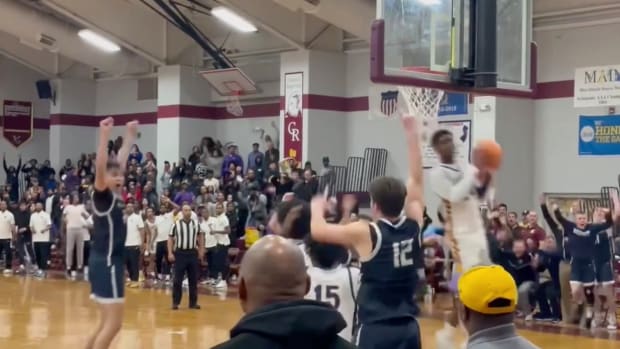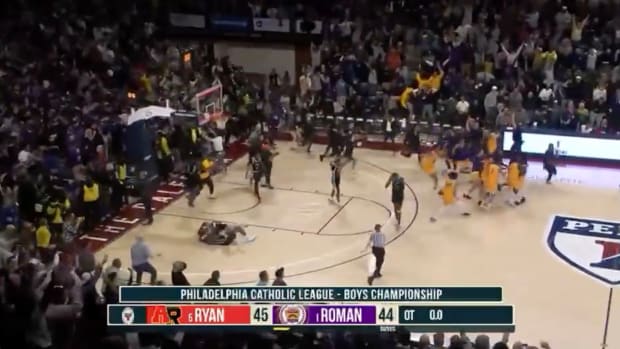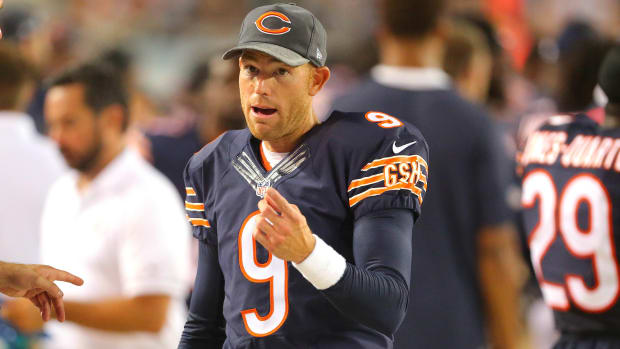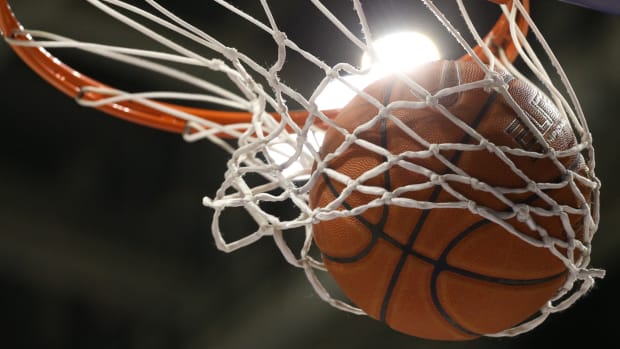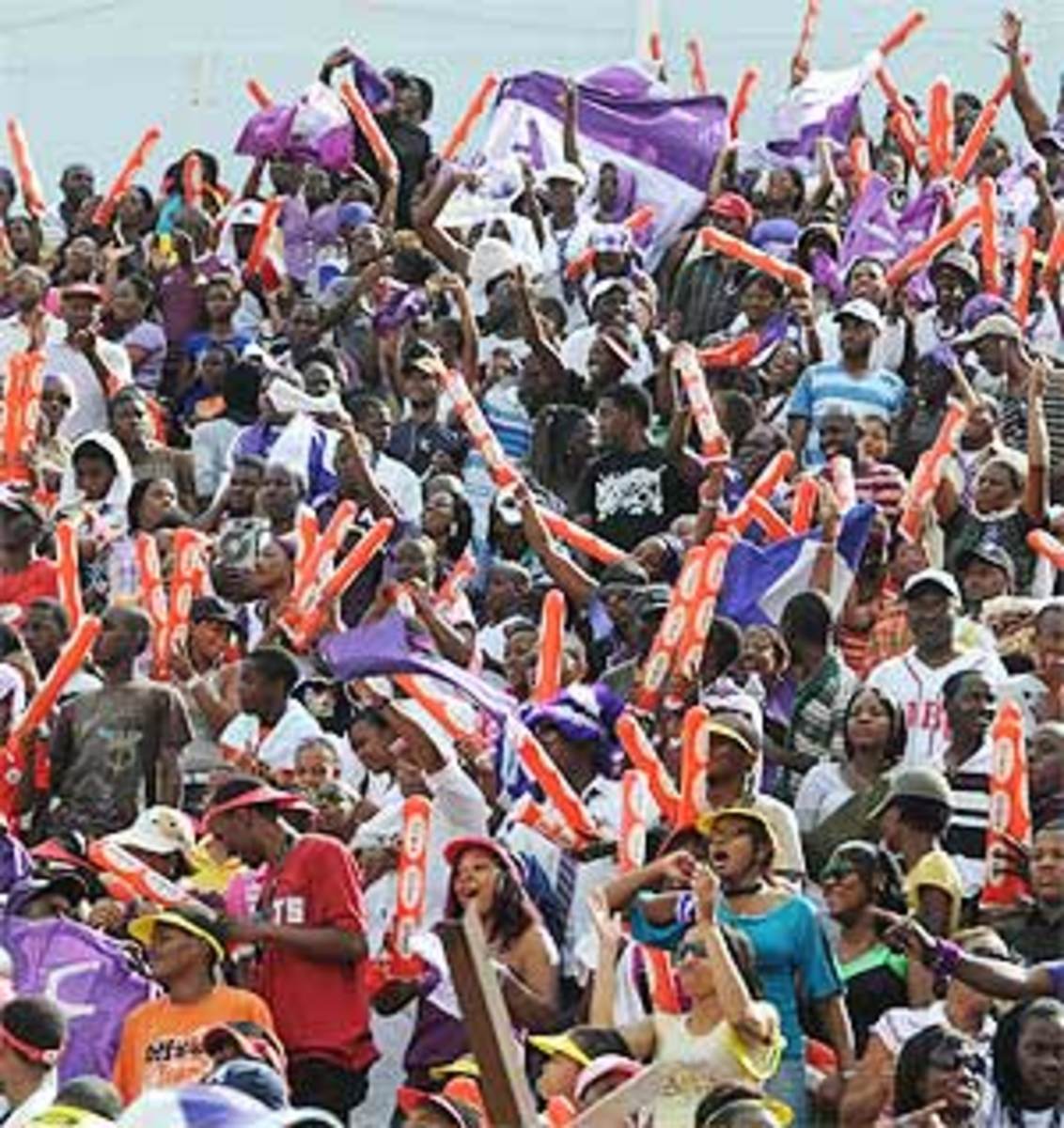
Champs meet offers colorful look at Jamaica's promising track stars
Jamaica is a country of vivid colors. The azure waters surrounding the island are as bright as a new pair of jeans. The ripe saffron-hued mangos and blood-red Otaheite Apples glisten like gems from their branches. And the concrete homes painted yellow, pink and lime green sparkle under the glow of the Caribbean light in midday.
But nowhere on the island is this kaleidoscope more visible than in Kingston, where the annual Inter Secondary Schools Sports Association (ISSA) Boys' and Girls' Athletic Championships -- known simply as "Champs" to locals -- takes place the first week in April at the National Stadium. At Champs, colors matter. Purple and white signify powerhouse Kingston College. (In Jamaica, a high school can be called a "college" in the manner typical of British Commonwealth nations, and are often held in higher esteem by alumni than the universities they attend.) Supporters of K.C.'s archrivals, Calabar High of Kingston, sport green and black. The faithful of Wolmer's High, also in Kingston, arrive decked out in maroon and yellow.
High school track and field is serious business in Jamaica. After all, this is the country that produced Usain Bolt, Shelly-Ann Fraser, Melaine Walker, Michael Frater, Nesta Carter, Veronica Campbell-Brown and Asafa Powell, all of whom won gold medals in sprinting at the Beijing Olympic Games last summer. And for 99 years Champs has been the meet at which almost every Jamaican runner has had to prove him or herself at before bursting onto the international stage.
According to Teddy McCook, a member of the International Association of Athletics Federations council and secretary general of the Jamaican Olympic Committee, Champs -- which this year drew 191 schools and more than 2,500 athletes, not to mention more than 80,000 spectators over four days -- is one of the biggest junior track and field meets in the world.
"[Jamaica] is to track and field fans what Mecca is to Muslims," says Ato Boldon, a native of Trinidad and Tobago who won a silver medal in the 100 meters and a bronze in the 200 meters at the Sydney Olympics in 2000. "I think this is the purest track meet in the world. This is not about money. It's not about shoe contracts. It's not even about country. It's about representing your family, your school and all the alumni. So I think that's why it has become my favorite track meet -- even including the Olympics.
Part of the allure of Champs is that spectators can witness some world-class track and field races during the four-day meet --- all for under $16. "Champs is something you grow up on," says George Forbes, the ISSA's competition secretary. "For example, Jamaicans who have gone to the States will take along their culture of [having] rice and peas on Sundays. Champs is our rice and peas. You just have to be at Champs."
But many attend because they know they could well have the opportunity to watch athletes who will one day represent the country in the Olympics. "We all remember when Powell was running at these championships," says Maynard McIntosh, a physician who has been coming to Champs for 30 years. "You saw these runners grow from that stage to winning and setting Olympic records."
Although the Beijing Olympics showcased Jamaica's sprinting talent to the rest of the world it didn't have much of an effect on the participation or attendance at Champs this spring. "The excitement [level] is the same," says Juliet Cuthbert, a Morant Bay High product who won a silver medal in the 100 meters at the Barcelona Games in 1992. "You always have high-quality running at Champs, whether it's an Olympic year or a non-Olympic year."
But Jamaica's dominance in Beijing did heighten the scrutiny by the international media, which came to Champs in droves in an effort to uncover the reason behind the country's sprinting prowess. Forty foreign journalists covered this year's event -- up from 10 in 2008 -- 24 of whom were part of an IAAF project called "A Day in the Life of Usain Bolt," to promote the stars of the sport and their personalities off of the track.
In addition, approximately 30 scouts representing American colleges showed up. The NCAA limits how often coaches can recruit overseas, so the scouts could watch and take notes, but they couldn't talk to runners. Each year, approximately 70 Jamaican runners are offered athletic scholarships to colleges in the U.S. For many years, leaving for America was considered an Olympic aspirant's only option. But perhaps the most obvious byproduct of Jamaica's success in Beijing is that staying home to study and train is now a viable option.
Seven of the 13 medalists from Beijing stayed in Jamaica. All but one attended the University of Technology in Kingston. But that choice isn't right for all runners. "Everybody can't stay in Jamaica," says Grace Jackson, who won a silver medal in the 200 meters in Seoul in 1988. "They now have a choice. In my days staying home wouldn't help you improve, and I still don't think everybody should stay home. Some people need exposure for growth. And some get too comfortable here and rest on their laurels. "
Jamaica's record haul in Beijing -- 11 sprinting medals, six of them gold, including the coveted titles of fastest man (Bolt) and tied with the fastest time for the year (Fraser) -- stole the spotlight from American sprinters, who had long dominated the sport. So Doug Logan, head of USA Track and Field, issued a challenge to the Jamaican Amateur Athletic Association in March, proposing a home-and-home series in 2009 that would pit the two nations' sprinters and hurdlers against each other in head-to-head, team-scored competition. "Our sprinters are not ready to concede Jamaican dominance," said Logan in his press release.
Scoring at Champs is based on a class and point system. Runners are divided into four age-specific classes. Boys in Class One must be under 19, and under 17 to compete in Class Two. Girls must be under 19 and 16, respectively. Future Olympians are usually revealed in these two classes. Classes Three (14 and under for boys, 15 and under for girls) and Four (13 year-old girls only) are for the youngsters.
The Class One records Bolt set in 2003 in the 200 meters (20.25) and 400 (45.35) still stand. Walker, who won gold in the 400-meter hurdles in Beijing, holds the Girls Class One 400-meter hurdles (56.55) mark, set in 2001. And Campbell-Brown,a two-time Olympic winner in the 200 meters, still holds the Girls Class One record the 100m (11.13, set in 2001).
Former Olympic greats Herb McKenley (the only athlete to have reached an Olympic track final in all three sprint events), Lennox Miller, Merlene Ottey all got their start at Champs too. Norman Manley, the founder of the People's National Party and a national hero for whom the airport in Kingston is named, ran at Champs in 1911. He set a schoolboy record, while at Jamaica College in Kingston, in a 100 yard dash that stood for 41 years, and ran 220 yards in 23 seconds. But that was before he won a Rhodes Scholarship in 1914 and was admitted to Oxford to study law.
Unlike Manley, who chose to end his athletic career after Champs, the meet will be the grandest stage most runners ever compete on. Their dreams of becoming the next Bolt or Fraser will die during the two days of preliminaries. For a select few, however, it serves as the precursor to future success as a professional or as an Olympian. This year, Dexter Lee, 18, of Herbert Morrison Technical High in the parish of St. James, won the Boys Class One 100 meters in 10.31. Lee also won the race at the World Junior Championships last year in Poland, in 10.40. Ramone McKenzie, also 18, of Calabar defended his title in the Boys Class One 400 meters at 46.88. He followed it up with a dominating performance in the Boys Class One 200 meters in 20.66 while wear a batman mask. He won the 200 meters two years ago at the World Youth Championships in Ostrava, Czech Republic, with a time of 20.67.
"I've been to World Juniors and World [but] you know that here at Championships every point counts," says Jura Levy, an 18-year-old at Vere Technical High in the parish of Clarendon. "You even get a point if you come in last."
Levy won the Girls Class One 200 meters in 23.73 and was second in the 100 meters (11.42), but faced plenty of competition just to make the squad. "If you don't make the team you're going to feel a little embarrassed," she says
Besides the scouts and journalists, much of the crowd at Champs is made up of alumni -- or "Old Boys" and "Old Girls" -- who return to support their school financially or with in-kind services such as providing free dental care or tutoring. "I'm an Old Boy of Kingston College," says McCook. "[The coaches or principals] come to me in September when school starts and say, 'We have a youngster or two we'd like you to look after for the next two or three years,' and I have to provide a grant every month for them to go to school. And I'm just one. They're several other Old Boys around the place who do the same thing."
Schools start training for Champs in September. Qualifying events begin in January, when at least one (and often two or three) track and field meets take place somewhere on the island every Saturday until April. "You have to use that to keep them motivated, keep them focused," says Michael Clarke, Calabar's head coach.
By Saturday, the final day of the competition, the drama has built to a crescendo and again, color is everywhere. The National Stadium's giant strobe lights are turned on at 7 p.m. that night, and they outshine pretty much everything else in the country's capital.
The relay finals -- Champs' marquee events -- are the hottest ticket in town. Students left school early on Friday to march to the stadium waving their school's flags and banners trying to get tickets in the bleacher section. (Grandstand tickets with better sightlines sell out well beforehand.) Today they linger outside the gate waiting for friends. If they were lucky enough to get a seat, they cram into the bleacher section to cheer on their classmates.
Vendors line the area, selling neatly stacked pink, baby blue, and aqua-colored cotton candy out of jumbo milk crates and hawking telephone cases for cell phones, among other items. Female supporters of the all-boys' schools, including Calabar High and Kingston College, wear green contact lenses and purple eye shadow to show their support. Students straddle the rails to better view the races rather than sit in their seats.
The crowd's noise level is so high before some of the races that the runners have to strain to hear the starter's gun go off. Students continue yelling and waving school banners wildly. The Calabar fans begin chanting "C-Bar!" The Kingston College backers respond with, "A fi wi time now" [it's our time now]."
Jackson, the sports director at the University of the West Indies in Kingston, graduated from Queens High, an all-girls school in the city. She held the high jump record at Champs for 14 years in several different classes, and returns to the event every year. Although she usually sits among the dignitaries -- competition officials and former Olympians -- she still cheers vigorously for athletes she likes. "I just try to behave myself," she says. "But my voice is very loud. I have a stadium voice and I can behave badly."
Holmwood Technical High, located in the parish of Manchester, dominated the meet and easily won the girls division for the seventh straight year, with 400.5 total points. Besides crossing the finish line ahead of most the runners, the Holmwood girls wanted to differentiate themselves, so the team members styled their hair using maroon and yellow cords as an accessory. Second place went to Edwin Allen High of the parish of Clarendon, with 203 points. But Holmwood coach Maurice Wilson was still sweating out the second-to-last race, the Girls Class One 4x400 relay, which Holmwood won in 3:34.35. "We weren't supposed to win this relay. Edwin Allen was the favorite," says Wilson. "It's just a great feeling to finish the championship."
Coming into the year's Champs, Calabar was the favorite to win a third straight boys team title. Calabar had won the event 21 times to Kingston College's 30 titles. The night before the meet began, Kingston had won a nationally televised academic show, School Challenge Quiz, which only heightened the tension.
"I've been to Championships every year since 1986," says Kingston coach Michael Russell. "And it's usually not over until the final day. It is so competitive that anything can happen, so we take it event by event."
A group of Calabar alums gathered just inside the stadium gate to sell T-shirts, pins, ties --- just about anything that is green and black or has Calabar written on it. "We are very passionate about our school," says Craig Francis, a land surveyor who graduated from Calabar in 1989 but has been attending the national meet since 1984. "We can [handle] losing -- just not to KC."
Going into the final race of the meet, the Boys Class One 4x400 relay, Kingston was four-and-a-half points ahead of Calabar. The last time two teams were as close heading into the finale was 1961.
The stadium trembled as the crowd rocked to the sound of drums and chants. McKenzie would run for Calabar. Kingston's stars, Keiron Stewart and Akino Ming, were injured and wouldn't run in the relay. Stewart, who won a bronze medal in the 110 meter hurdles at the World Junior championships and had already won the 110-meter and 400-meter hurdle events earlier in the meet, was in the 200 meter finals. Ming, who ran the 400 at the World Juniors had hurt his calf in 400 at Champs. Calabar looked like a lock to win.
It took 20 minutes to calm the crowd enough to begin the race. The race announcer prolonged the suspense and hyped the crowd some more by telling the assembled throng, "It's really gonna come down to a hum-dinger." Calabar, which entered the relay with 214 points, needed to win the relay in order to defend its title, while Kingston, with 218, needed to finish only third or better.
Calabar and St. Jago High, of the parish of St. Catherine, were neck-and-neck the entire race. For the anchor legs, team captains McKenzie and Nickel Ashmeade, of St. Jago, had the baton for their respective schools. As they began, the crowd was screaming their support for Calabar. It seemed Calabar might win the race and overtake the few points Kingston had in the overall meet. But with around 150 yards left, McKenzie's hamstring cramped up and he was overtaken by Nicholas Maitland from St. Elizabeth Technical. St. Jago's Ashmeade shifted into an even higher gear and powered himself across the finish line just ahead Maitland. Calabar finished third and Kingston fifth.
The Kingston men, assured of the meet title, proclaimed their school motto: The brave may fall but never yield. "When you know that you're facing an impossible task but you do it anyway, we refer to that as 'purple spirit,'" says Wayne Stephens, a computer consultant, of Toronto. Stephens graduated from Kingston in 1968 but has been coming to Champs for the past 13 years. "That epitomizes what KC is all about. That spirit that comes from who-knows-where and prevails in the end. We believe it."
All of Jamaica believes it too.

